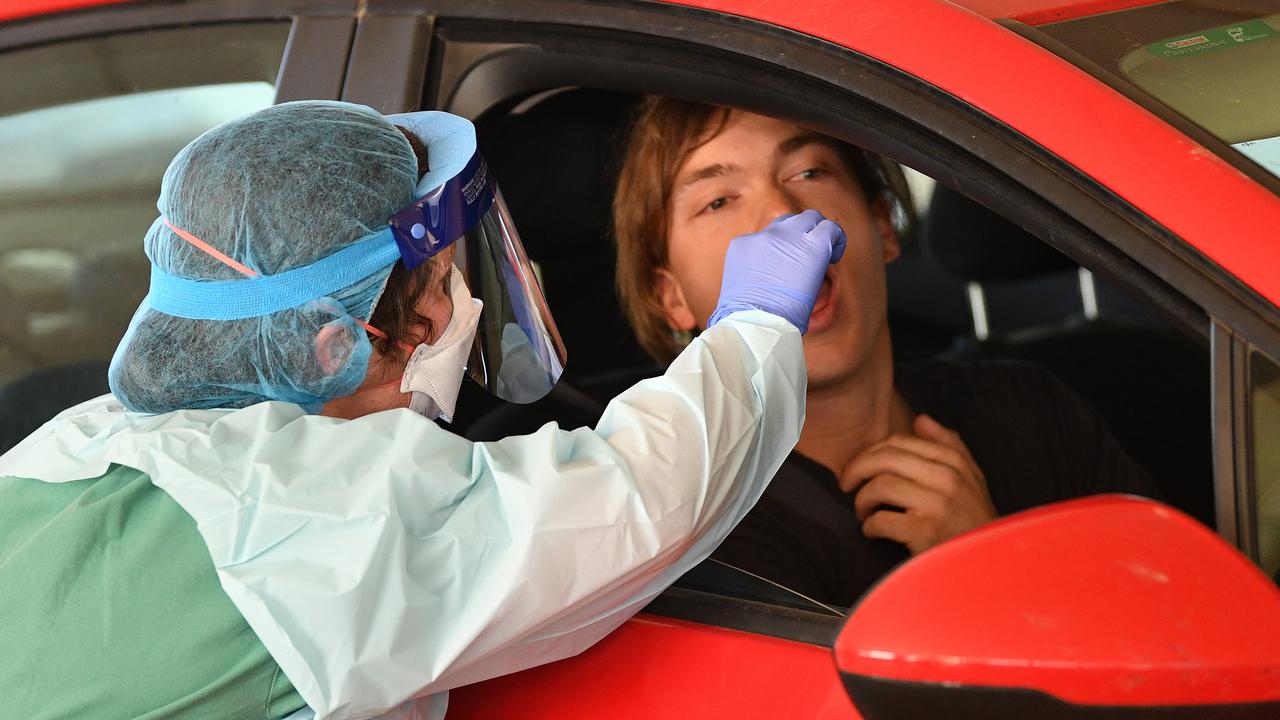Flattening the curve: How staying at home helps fight coronavirus
A curved graph showing how to “flatten the curve” of the coronavirus spread has gone viral, potentially saving many lives.
A curved graph demonstrating how to slow down the spread of the coronavirus has gone viral in the wake of the pandemic.
The infographic, which is being shared widely across global news outlets, shows a pink and blue curve with a dotted line going through one of them.
Important to remember that #Covid-19 epidemic control measures may only delay cases, not prevent. However, this helps limit surge and gives hospitals time to prepare and manage. It's the difference between finding an ICU bed & ventilator or being treated in the parking lot tent. pic.twitter.com/VOyfBcLMus
— Drew Harris (@drewaharris) February 28, 2020
The dotted line represents our health system’s capacity to deal with the spread of an epidemic like the coronavirus.
The pink curve represents what could happen if we have a surge in coronavirus cases without protective measures in case; in other words, if it exceeds our medical system’s ability to keep the outbreak under control.
READ MORE: Follow the latest coronavirus updates
The blue part represents what happens if we do take appropriate measures to slow down the spread of the virus, such as self-isolation and frequent handwashing.
In other words, if we take protective measures far enough in advance, we’ll never go beyond the point where our healthcare system is incapable of coping.
The overall goal, then, is to “flatten the curve” – to slow it down through preventive measures so that we can eventually halt the spread entirely.

The graph originated with a Philadelphia-based health analyst named Drew Harris, who initially used it to teach his classes. It’s since gone viral after being linked to the coronavirus, with the hashtag #FlattenTheCurve trending on Twitter.
Mr Harris stressed that control measures would only delay cases, rather than prevent them entirely.
But this is just as important as fully containing the disease, because it limits the surge and gives our hospitals and healthcare workers more time to prepare.
“It’s the difference between finding an ICU bed and ventilator or being treated in the parking lot tent,” he said.
RELATED: Steps you must take to avoid killer virus
RELATED: How the virus jumped from animals to humans
In an email to The New York Times, he said it was ineffective to argue in favour of “getting the outbreak over with quickly”.
“That is a recipe for panic, unnecessary suffering and death,” he said. “Slowing and spreading out the tidal waves of cases will save lives. Flattening the curve keeps society going.”
“Even if you don’t reduce total cases, slowing down the rate of an epidemic can be critical,” added Carl Bergstrom, a biologist at the University of Washington.
HOW EXACTLY DO WE ‘FLATTEN THE CURVE’?
Experts say the best thing individuals can do is self-isolate if they feel sick, and practice good hygiene.
This includes frequently washing your hands, using hand sanitiser and avoiding touching your nose, mouth or eyes.
Dr Kathryn Snow, an epidemiologist at the University of Melbourne, told news.com.au people should ensure they’re able to isolate themselves for up to two weeks if needed.
Drawing on measures from countries like Singapore and Hong Kong, which have been on the more efficient end of the global response to the virus, she said “broader social distancing measures” have proved most effective.
“Things like encouraging people to work from home, closing down schools, and immediately finding (positive) cases and isolating them,” she said.
This also includes making sure employers are supportive of working-from-home measures, and that childcare support is available for parents, particularly as school closures become more widespread.

Crucially, Dr Snow urged people not to stockpile items.
“Of course people need to be prepared, but it’s worrying seeing empty shelves of toilet paper at the supermarket. There’s elderly and disabled people who need this stuff more. If people are stockpiling stuff they don’t need, that’s really unacceptable.”
Flattening the curve in Australia is now at a crucial stage. The nation has passed 160 confirmed coronavirus cases, with a wave of major events being cancelled.
Sydney University infectious diseases specialist Professor Robert Booy forecast that, in a best-case scenario, up to 3000 people could die of the disease three months from now.
“If we restricted transmission and got the number of people catching the infection down to just 20 per cent, that would be 5 million people,” he said. “If we did fantastic clinical work in GP practices and hospitals, the death rate could be reduced to 0.1 per cent. This is not a fantastic figure.”



